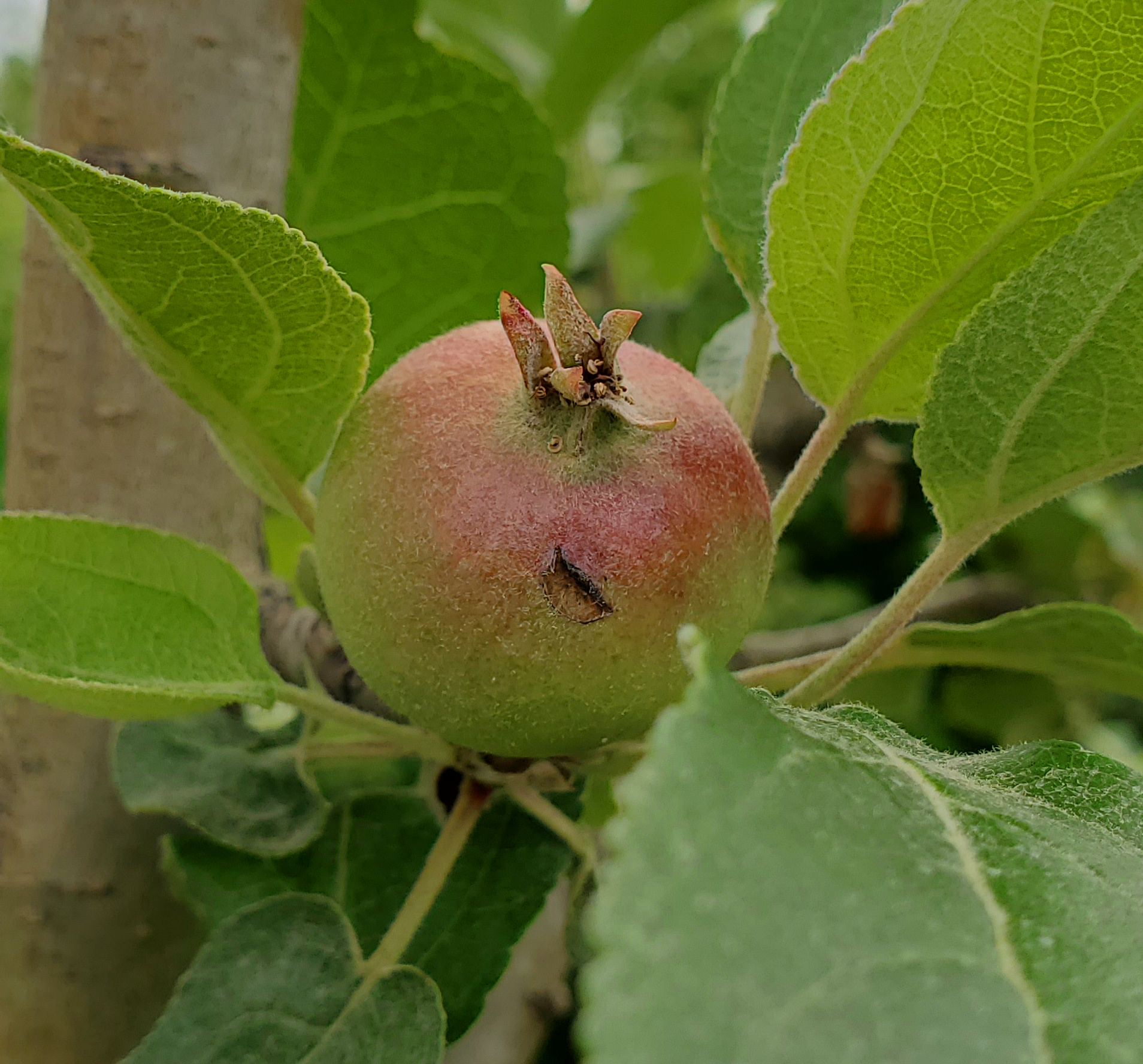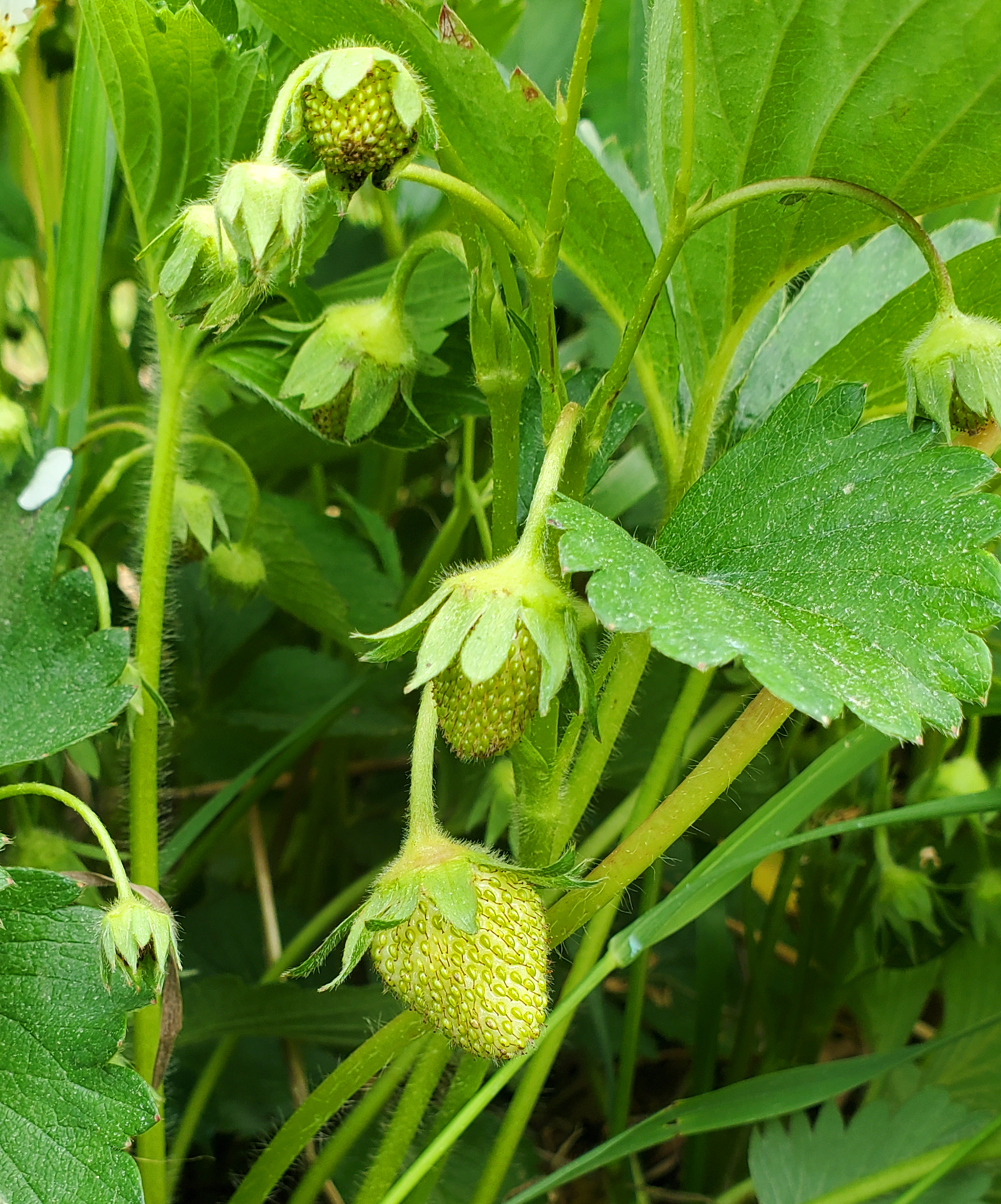Southwest Michigan fruit update – June 1, 2021
Last week’s rains were welcomed by the fruit crops, but more is needed to reverse this season’s lack of moisture.

Weather
Last week started with highs in the upper 80s. A cold front on Wednesday, May 26, brought cooler temperatures and 0.25 to 0.5 inches of rain. Another system passed through southwest Michigan on Friday, bringing even cooler temperatures and another 0.1 to 0.33 inches of rain. Highs on Friday were below 60. Saturday and Sunday mornings had frost warnings. The dew point was just below freezing so while we had heavy frost in some areas there was no real damage.
This week should be more consistent. Highs will be in the 70s, rising to the 80s by the weekend. Rain is expected on Thursday.
Soils remain dry. We have had about 5 inches of precipitation for the year. This is 20-25% of normal by this time of year. At this time, most of lower Michigan is in a D1 level drought. Portions of Van Buren and all of Allegan counties and areas to the north and east are in a D2 (Severe) drought condition. Growers who can irrigate should be irrigating.
For the week, we picked up 0.5 to 0.75 inches of rain. With the seasonal week, we picked up an average number of growing degree days (GDD) last week: 132 GDD base 42 and 86 GDD base 50.
|
Southwest Michigan GDD summary from March 1 - May 30, 2021 | |||
|---|---|---|---|
|
Station |
GDD 42 F |
GDD 45 F |
GDD 50 F |
|
Benton Harbor (SWMREC) |
894 |
730 |
508 |
|
Lawton (Lawton) |
913 |
746 |
513 |
|
Fennville (TNRC) |
768 |
617 |
416 |
|
Average for the SW region |
883 |
720 |
496 |
|
Average last week |
751 |
607 |
410 |
Tree fruit
Rain over the past month has been one-third of normal, inhibiting most plant diseases except powdery mildews. Irrigation is needed on sandy sites. Insect activity has increased with warm temperatures. Plum curculio feeding and egglaying scars are becoming easier to find. San Jose scale males began showing up in the Trevor Nichols Research Center trapline on May 24. Crawler emergence is approximately 400 GDD base 51 F after biofix, still two or three weeks off, depending on the upcoming temperatures.
Periodical cicada appearance has been in the regional and national news lately. This insect has the potential to be found in southeastern areas of Michigan, but is not expected to be much of an issue for growers in southwest Michigan.
Apricots are at 1.25 inches in diameter with hard pits. The crop looks to be very good at some sites and poor at others. Plum curculio is a concern with the warm evenings. Dry conditions have not been very favorable for bacterial spot. Copper is about the only bactericide labeled for apricot, and most labels do not support post bloom use.
Peach and nectarine have sized up quickly over the past week. They are generally at 23 to 28 millimeters. It looks like there will be a significant June drop, based on the number of smaller fruit still on the tree. Bacterial spot treatments to protect fruit are most effective from shuck split to pit hardening. Leaf symptoms due to bacterial spot are rare due to the continued dry weather.
Oriental fruit moth catches are still high but falling. Some orchards have had catches over 150 per trap per week. This first generation oriental fruit moth targets tender shoot tips of peach, and to a lesser extent, apple shoots. No flagging by oriental fruit moth has been reported yet but should show up soon. Tarnished plant bug and plum curculio are the primary pests affecting fruit now.
Peach leaf curl symptoms are continuing to show up in small amounts even where fungicides were applied last fall in part due to multiple cool wet conditions favoring infection this spring.
In cherries, tarts are at 13 to 15 millimeters and pits have hardened. Sweet cherries are increasing in size again now that pits are hard. Some sweet cherry fruit are showing early red skin development, which sometimes is an early indicator of June drop to come. Cherry leaf spot infection periods have been infrequent lately due to relatively short wetting periods. Plum curculio feeding and egglaying scars are becoming easier to find.
In plums, Japanese plums are at 21-23 millimeters. European plums are at 20 millimeters. Crop prospects for plums look OK to only fair, depending on the site. Black knot control is still ongoing until terminal growth slows. Plum curculio damage is appearing on fruit.
Apple follow-up hand thinning is beginning. Fruit size ranges from 18 millimeters (Gala and Fuji) to 28 millimeters (Zestar). Many fruit have low seed counts due to poor pollination. Thinning should focus first on varieties such as Honeycrisp, Fuji and Goldens that initiate bud set first.
Scouting for fire blight symptoms should be underway. Be on the alert that the fungal disease nectria twig blight on Rome, Northern Spy and sometimes Fuji can resemble the “shepherds crook” wilt symptom of fire blight. For nectria, the swollen bourse area of the twig often shows a salmon orange sporulation not seen in fire blight.
Oriental fruit moth and codling moth catches continue to be significant. Recent apple scab infection events have been few. Scab symptoms were detected over the past week. Scab ascospore catches are expected to be still significant but decreasing at least for the next rain or two.

Pears are approximately 20-25 millimeters diameter. Fruit that are not successfully pollinated are dropping. Pear fruit are generally too hard to be a target for first generation codling moth. Plum curculio and tarnished plant bug can target pears at this stage. Pear psylla nymph are starting to appear. Scab can still a threat.
Small fruit
Grapes that were not impacted by the radiation freezes the first week of May have 10-18 inches of shoot growth and the flower clusters are elongating. Some early hybrid wine grape varieties have started blooming. Secondary shoots are beginning to grow on freeze damaged vines.
Wild grape bloom is widespread in southwest Michigan. Wild grape bloom is used as a biofix for grape berry moth. Scout for wild grape bloom on your farm. Biofix is when 50% of clusters are at 50% bloom. May 25 can be used as a general date for wild grape bloom in Berrien County.
Protectant fungicide sprays to control phomopsis and black rot are the management focus just before bloom.
Blueberry bloom is ending and small green fruit are present in a number of varieties. After bloom, disease control focuses on anthracnose infections to young green fruit. Applications of pesticides during bloom should be done in the early morning or at night when bees are unlikely to be foraging. Bees can carry pesticides back to the hive. Freeze damage is spotty. Some fields have various levels of injury from different freezes in early, mid- and late May.
Shoot growth looks good. In fields without irrigation, the soils are extremely dry and shoot growth may soon stop. Maintain irrigation to maintain shoot and fruit growth. Most fruit size is determined soon after bloom.
Using the Enviroweather model, cherry fruitworm and cranberry fruitworm egglaying has begun. In sites with a history of high fruitworm pressure, an insect growth regulator application timed to avoid pollinators can help. For other sites, a general pesticide is useful after bloom is completely finished.

Strawberry bloom is ending. Fruits are generally thimble-sized. Some picking of early varieties in the southern areas has started. With bloom and bee activity, do not use insecticides. As bloom ends, consider sprays to protect against tarnished plant bug and flower thrips.

Bramble bloom has begun. Do not apply insecticides during bloom.
Miscellaneous crops
Currant berries are sizing. Some varieties are almost full size.
Gooseberries are continuing to green up. Fruits are around 10 millimeters in size.
Hops training should be finishing this week. With the dry soils, irrigation is being used to increase shoot length ahead of training. European corn borer biofix was last week. Eggs are being seen.
Chestnut catkins are developing. Lecanium scale is showing up on chestnut trees. Mature trees can withstand small populations, but for small trees or heavy populations, a treatment may be necessary to reduce tree stress and build up of sooty mold.
Hazelnut shoots are continuing to lengthen. Early season leaf weevils create small holes in leaves this time of year. This can be an issue for young, first year plantings, but not a concern for mature trees.
Cranberries are greening up slowly. Most beds are approaching bloom. They are in the hook stage.
Upcoming meetings
Our regular Southwest Michigan Monday Fruit IPM Updates are available online. You need to register to receive the Zoom link and password for these meetings. The webinars are free and one pesticide applicator credit is available for each meeting. We had over 70 growers attending our Monday meetings last year.



 Print
Print Email
Email
